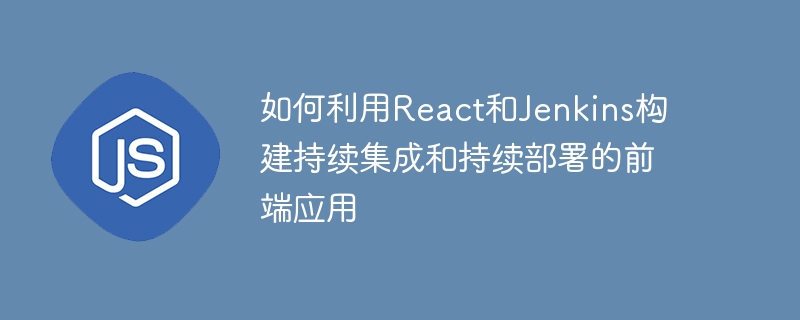

How to use React and Jenkins to build continuous integration and continuous deployment front-end applications
Introduction:
In today's Internet development, continuous integration and continuous deployment have It has become an important means for the development team to improve efficiency and ensure product quality. As a popular front-end framework, React, combined with Jenkins, a powerful continuous integration tool, can provide us with a convenient and efficient solution for building front-end applications for continuous integration and continuous deployment. This article will introduce in detail how to use React and Jenkins for continuous integration and how to implement automatic deployment through Jenkins, and give corresponding code examples.
1. Steps of continuous integration
2. Steps of continuous deployment
3. Code Example
The following is a sample code for a front-end application with continuous integration and continuous deployment built using React and Jenkins:
// .jenkinsfile
pipeline {
agent any
stages {
stage('Clone') {
steps {
git 'https://github.com/your-repo.git'
}
}
stage('Build') {
steps {
sh 'yarn install'
sh 'yarn build'
}
}
stage('Deploy') {
steps {
publishOverSSH server: 'your-server',
credentialsId: 'your-credential',
transfers: [transferSet(sourceFiles: 'dist/*',
removePrefix: 'dist', remoteDirectory: '/var/www/html')]
}
}
}
}In the above code, by using Jenkins' pipeline plug-in defines a three-stage pipeline, namely cloning code, building and deploying. In the build phase, yarn is used to install and build dependencies, and in the deployment phase, the "Publish Over SSH" plug-in is used to upload the build product to the specified server path.
Conclusion:
Through the introduction of this article, we have learned how to use React and Jenkins to build front-end applications for continuous integration and continuous deployment. In continuous integration, we can configure Jenkins Job to automatically pull the code, install dependencies and build the project. In continuous deployment, we can use the Jenkins plug-in to automatically deploy the build product to the remote server. In this way, we can greatly improve the efficiency and quality of front-end development, allowing the team to focus more on business development, while quickly responding to and fixing problems and providing a better user experience.
The above is the detailed content of How to use React and Jenkins to build front-end applications for continuous integration and continuous deployment. For more information, please follow other related articles on the PHP Chinese website!




